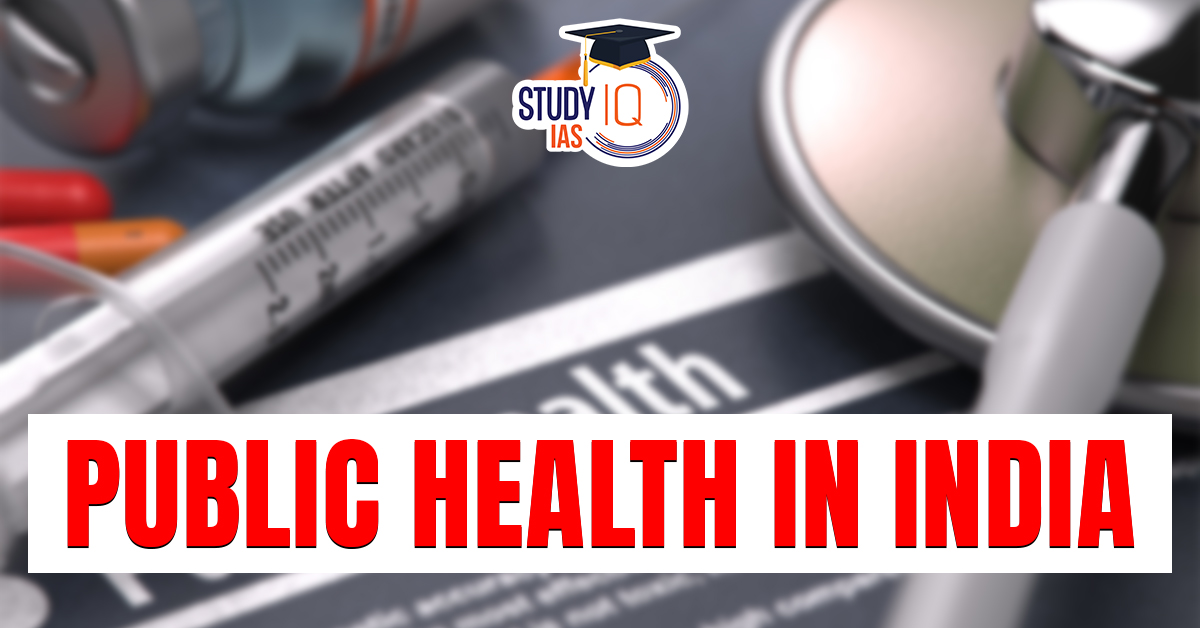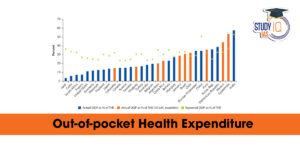Table of Contents
Context: India has long been committed to ‘Health for All’ under the World Health Organization’s Universal Health Coverage (UHC) framework, which prioritises primary health care (PHC) and reduces out-of-pocket expenditure (OOPE).
Significant Strides Made in Public Healthcare in India in Recent Years
- Ayushman Bharat Pradhan Mantri Jan Arogya Yojana (AB-PMJAY): Launched in 2018, AB-PMJAY is the world’s largest government-funded health insurance scheme, providing coverage of up to ₹5 lakh per family per year for secondary and tertiary care.
- Over 36 crore Ayushman cards have been issued, and more than 31,000 hospitals have been empanelled under the scheme.
- Expansion of Health Infrastructure: Under the Ayushman Bharat Health and Wellness Centres (AB-HWCs) initiative, more than 5 lakh HWCs have been established to provide comprehensive primary health-care services, including maternal and child health, non-communicable disease screening, and basic diagnostic services.
- COVID-19 Response and Vaccination Drive: India conducted the world’s largest COVID-19 vaccination drive, administering over 2 billion vaccine doses.
- The development of indigenous vaccines like Covaxin and Covishield and their rapid deployment demonstrated India’s capacity for large-scale public health mobilisation.
- National Digital Health Mission (NDHM): Launched in 2020, the NDHM aims to create a unified digital health ecosystem.
- Over 47 crore Ayushman Bharat Health Accounts (ABHA) have been created, enabling individuals to store and share their health records digitally.
- Reduction in Communicable Diseases: Concerted efforts under the National Health Mission (NHM) have led to a decline in communicable diseases.
- India was declared polio-free in 2014 and has made significant progress in reducing tuberculosis (TB) cases under the National TB Elimination Programme, aiming for TB elimination by 2025.
- Increased Budget Allocation for Health: The health budget for 2025 stands at ₹95,957.87 crore for the Department of Health and Family Welfare and ₹3,900.69 crore for the Department of Health Research.
- This represents an increase of ₹2,000 crore for AB-PMJAY, reflecting the government’s focus on strengthening healthcare infrastructure and services.
Issues Associated with Public Health Care in India
- Inequitable Access to Healthcare:: Informal sector and rural populations face barriers to healthcare:
- Poor health infrastructure in rural areas
- Lack of insurance literacy and reliance on middlemen.
- Weak Secondary and Tertiary Public Healthcare: The public sector lacks robust secondary and tertiary care facilities, pushing patients towards expensive private hospitals.
- This increases out-of-pocket expenditure (OOPE) and limits access to affordable healthcare.
- Overemphasis on Curative Care: The focus on curative care, especially through insurance schemes like PMJAY, has shifted attention away from preventive and community-based health services, which are crucial for reducing long-term healthcare costs.
- Shortage of Skilled Workforce: India faces a significant shortage of doctors, nurses, and allied health professionals, which hampers the delivery of quality healthcare services.
- Declining Public Health Investments: There has been a steady decline in the share of budgetary allocation to public health programmes like the National Health Mission (NHM).
- The focus on expanding medical infrastructure and digital health services has come at the expense of strengthening primary and community health care.
- Outdated Data: Outdated demographic data limits effective policy planning.
- Eg., the Last Census was conducted in 2011.
Global Practices
Negative Example
United States
- The insurance-driven system has led to:
- High health-care costs
- Widening inequalities
- Limited access for uninsured individuals
- Public backlash over claim denials
Positive Examples
Thailand
- Tax-funded universal coverage scheme
- Strong public health investment
- Regulated private insurance
- Focus on PHC and community-based services
Costa Rica
- Mandatory insurance scheme (Caja Costarricense de Seguro Social)
- General tax revenue funding
- Emphasis on PHC and public health infrastructure
Recommendations for Strengthening India’s Health System
- Strengthen Primary Health Care: Invest in preventive and community-based health services to reduce the burden on secondary and tertiary care.
- This includes revitalizing public health centers (PHCs) and community health centres (CHCs).
- Increase Public Sector Investment: Enhance funding for public healthcare infrastructure, particularly in secondary and tertiary care, to reduce reliance on private hospitals and lower OOPE.
- Regulate Private Sector: Implement strict regulations on private healthcare providers to prevent inflated costs and ensure equitable access to quality care.
- Expand Universal Health Coverage: Develop comprehensive public health benefits packages that cover informal workers and vulnerable populations, ensuring they have financial protection against health-related expenses.
- Promote Digital Health: Leverage digital technologies to improve healthcare accessibility, especially in rural areas, through initiatives like telemedicine and digital health records.
- Address Workforce Shortages: Increase medical education opportunities and incentivize healthcare professionals to work in underserved areas to address workforce shortages.
- Increase Public Health Spending: Increase health expenditure to at least 5% of GDP (as per National Health Policy 2017).
- Learn from Successful Global Models: Adopt Thailand’s model of tax-funded universal health coverage.
- Integrate Costa Rica’s approach of mandatory insurance with state control.
- Strengthen government regulation of private health care (similar to Canada and the UK).


 Out-of-Pocket Health Expenditure, Reason...
Out-of-Pocket Health Expenditure, Reason...
 Treasury Bills (T-bills): RBI Cuts Holdi...
Treasury Bills (T-bills): RBI Cuts Holdi...
 Fisheries Sector in India, Current Statu...
Fisheries Sector in India, Current Statu...

























